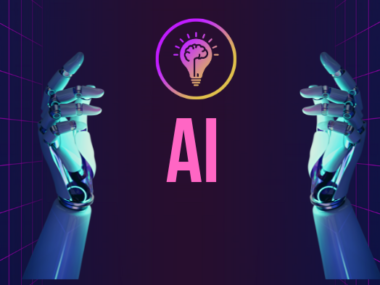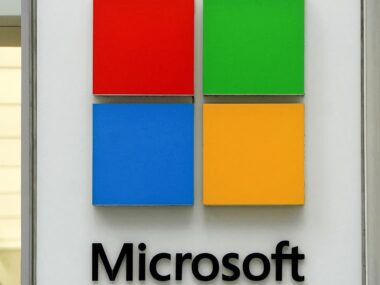DeepSeek made waves in the tech world last month, and according to AI experts, this is just the beginning of the Chinese startup’s impact on the AI sector.
In late January, DeepSeek captured attention with its R1 AI model, claiming it can perform similarly to OpenAI’s o1 model but at a much lower cost. The news led to a dip in tech stocks, as DeepSeek briefly surpassed ChatGPT to become the top app in the Apple App Store.
This achievement prompted US tech giants to reassess America’s position in the AI race against China, particularly in light of the substantial investments backing these efforts. While Vice President JD Vance didn’t specifically reference DeepSeek or China during his speech at the Artificial Intelligence Action Summit in Paris, he underscored the importance of the US maintaining its AI leadership.
“The United States of America is the leader in AI, and our administration plans to keep it that way,” he stated, while emphasizing the US’s willingness to collaborate with other countries.
Experts also point out that it’s not just DeepSeek’s cost-efficiency and performance that stand out. The R1’s ability to reason and “think” through answers to deliver high-quality results, along with the company’s decision to make key technology publicly accessible, is expected to push the AI field forward.
AI has been integral to tech products for years, but its impact has surged in the past two years, driven by the success of ChatGPT and other generative AI services that have transformed work, communication, and information retrieval. This shift has turned companies like chipmaker Nvidia into Wall Street favorites and reshaped Silicon Valley. Therefore, any advancement that enhances AI models’ capabilities and efficiency is being closely observed.
“This is definitely not hype,” said Oren Etzioni, former CEO of the Allen Institute for Artificial Intelligence. “But also, this is a very fast-moving world.”
AI’s TikTok moment
Tech leaders have swiftly reacted to DeepSeek’s emergence. Google DeepMind CEO Demis Hassabis described the excitement around DeepSeek as “exaggerated” but acknowledged its model as “probably the best work I’ve seen come out of China,” according to CNBC.
Microsoft CEO Satya Nadella mentioned during the company’s January earnings call that DeepSeek features some “real innovations,” while Apple CEO Tim Cook commented on the iPhone maker’s earnings call that “innovation that drives efficiency is a good thing.”
However, the attention has not been entirely positive. Semiconductor analyst SemiAnalysis raised doubts about DeepSeek’s claim that it only cost $5.6 million to train. OpenAI told The Financial Times that it found evidence suggesting DeepSeek may have used its models to train its own competitor.
“We are aware of and reviewing indications that DeepSeek may have inappropriately distilled our models, and will share information as we know more,” an OpenAI spokesperson said in a statement to CNN. DeepSeek has not yet responded.
Additionally, two US lawmakers have called for a ban on the app from government devices after security experts highlighted its potential ties to the Chinese government, as reported by the Associated Press and ABC News. Similar concerns surround the social media app TikTok, which faces the possibility of being sold to an American owner or banned in the US.
“DeepSeek is the TikTok of (large language models),” said Etzioni.
DeepSeek has made a significant impact on the technology industry.
Tech giants are already considering how DeepSeek’s technology could impact their products and services.
Lewis Tunstall, a senior research scientist at AI platform Hugging Face, explained, “DeepSeek provided us with a tech report outlining the core concepts, but they didn’t include the missing elements we need.” Tunstall is overseeing an effort to fully open-source DeepSeek’s R1 model. Although DeepSeek shared the research paper and model parameters, the code and training data were not disclosed.
During a Microsoft earnings call, Nadella mentioned that Windows Copilot+ PCs, designed to support AI models, would run AI models distilled from DeepSeek’s R1 locally. Qualcomm also confirmed that within a week, models based on DeepSeek’s R1 were operational on smartphones and PCs using its chips.
AI researchers and developers are still investigating DeepSeek’s potential impact on AI progress.
DeepSeek’s model isn’t the only open-source one capable of reasoning before responding; OpenAI’s o1 model from last year can do that as well. However, DeepSeek stands out due to its ability to reason and learn from other models, coupled with the transparency it offers to the AI community. Users of DeepSeek’s app can even observe how the model “thinks” while answering questions.
“You can see the wheels turning inside the machine,” said Durga Malladi, Qualcomm’s senior vice president and general manager for technology planning and edge solutions, in a CNN interview.
Tunstall believes that new models capable of reasoning like DeepSeek may emerge soon, which could be crucial as tech companies race to build AI agents—seen by many in Silicon Valley as the future evolution of chatbots and user-device interaction, though this shift has not fully materialized.
Elon Musk, in a video appearance at the World Governments Summit, revealed that Grok 3, the upcoming chatbot on X, will feature “powerful reasoning capabilities.”
For now, the AI community continues to explore DeepSeek’s advancements, though experts, like Etzioni, predict that another breakthrough will emerge within the next year. “It’s a significant step forward, but it will likely be replaced by something else in the next 12 months,” he said.











